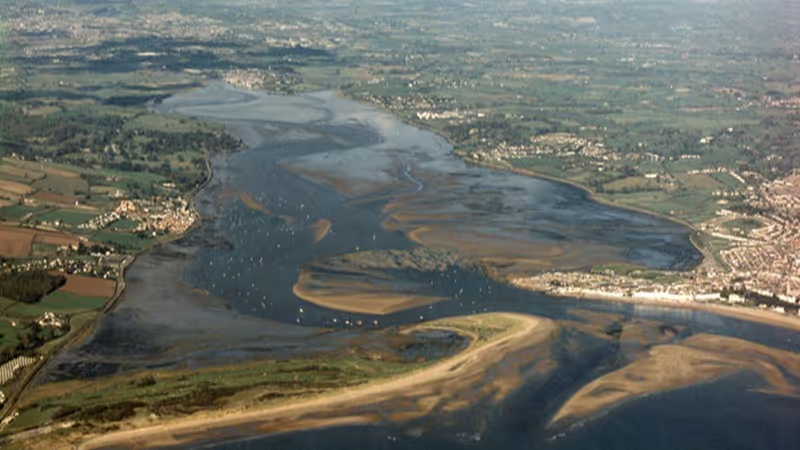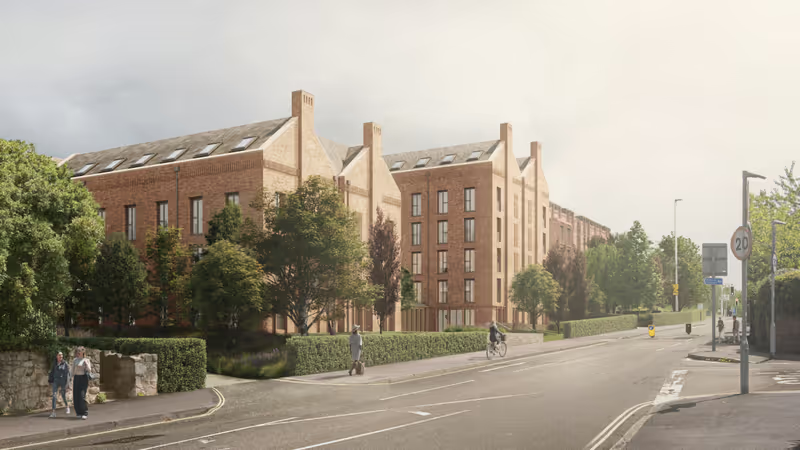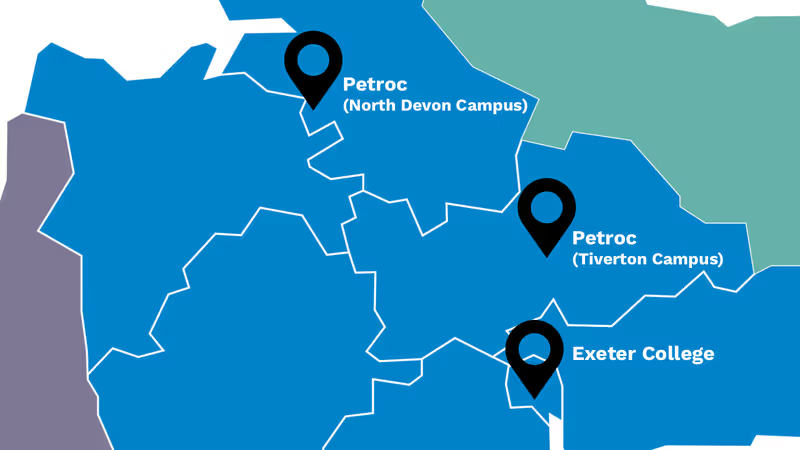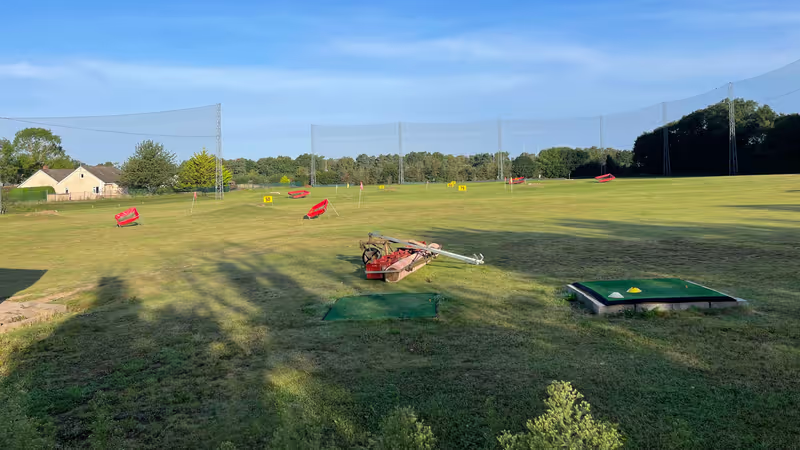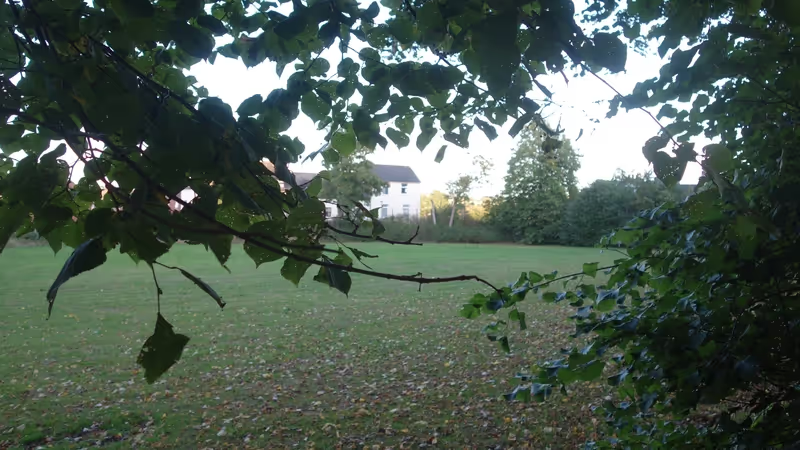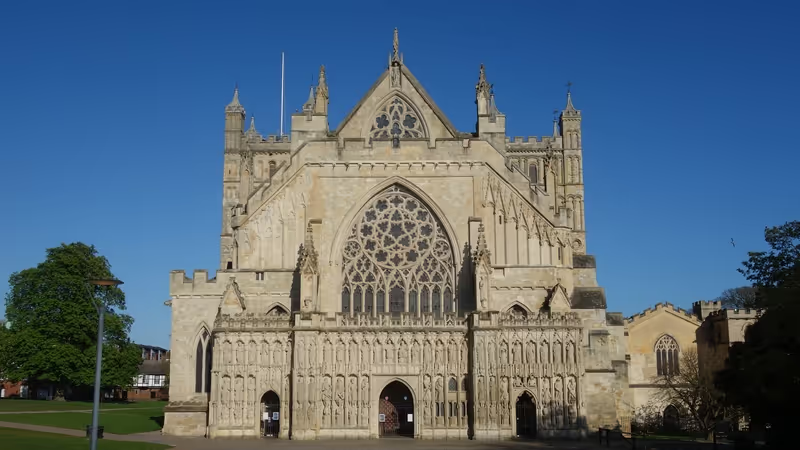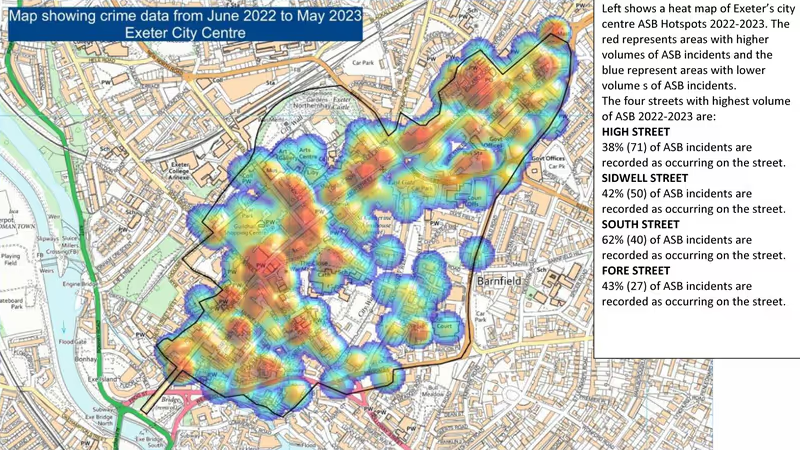Late last year Exeter College applied for planning permission to build a new sports pavilion and all-weather pitch at Exwick and Flowerpot Playing Fields.
Its plans include demolishing the changing rooms in Western Road and replacing them with a new sports pavilion including changing rooms, a gym and teaching space.
It also wants to replace the grass playing fields, which provide two football pitches and a rugby pitch, with a single artificial all-weather rugby pitch which would be protected by surveillance cameras and a three metre fence and lit by floodlights at night.
 Exeter College Exwick and Flowerpot Playing Fields redevelopment site plan.
Exeter College Exwick and Flowerpot Playing Fields redevelopment site plan.
Illustration: Grainge Architects
The playing fields straddle the railway line on the west bank of the River Exe between Exeter St David’s and St Thomas stations.
Exeter City Council, which owns the whole site, leased it to Exeter College for 25 years in 2016 on the condition that community use would continue.
The area intended for the fenced-off artificial pitch is alongside the skatepark. It is regularly used by residents for leisure and sports activities, many of whom objected strongly to the plans.
Local resident Jacqueline Mead said they are “a beautiful area that everyone enjoys, from dog walkers to parents and grandparents playing games, running, walking, picnicking”.
She added that the playing fields were “intended for the whole community, not just those who belong to the college.”
Terry Cole said that the fields “should be available for everyone to enjoy” and that “too many of our beautiful parks are being taken from us for the pleasure of a chosen few.”

Sport England also objected to the proposals, saying it opposed “the granting of planning permission for any development which would lead to the loss of, or would prejudice the use of, all or any part of a playing field”.
It pointed out that there are already four similar artificial turf pitches in the Exeter area, one of which is adjacent to the redevelopment site.
The national sporting body, which funds the Exeter & Cranbrook Live & Move project, emphasised the fact that Exeter College had provided the Flowerpot Fields football pitches to compensate for the loss of playing fields at Countess Wear which the college had redeveloped for housing.
Both the Environment Agency and Devon County Council, which is the Lead Local Flood Authority, also objected. They expressed concern about the impact the artificial pitch and pavilion could have on nearby flood defences.
The site is in flood zones two and three, indicating medium and high flooding risk.
The current River Exe defences were constructed in the 1970’s following a major 1960 flood which left more than 1,000 homes and businesses in Exwick, St Thomas and Alphington submerged.
Six feet of water surged along Okehampton Street, just to the south of the redevelopment site.
Environment Agency studies indicate that these defences would no longer be able to protect vulnerable parts of the city in a more extreme flood, and predicts that there is now a 1 in 100 chance of annual flooding in the city since climate change has made such events more likely.
 Environment Agency flood risk plan. Contains OS data © Crown copyright and Environment Agency data.
Environment Agency flood risk plan. Contains OS data © Crown copyright and Environment Agency data.
The third generation (3G) artificial turf with which Exeter College proposes to replace the grass pitches has also been criticised for its environmental impact.
By making the complex organic ecosystem of which soil is composed inaccessible at ground level it reduces biodiversity, undermining the important role played by grasslands in supporting wildlife.
It is also frequently made using granulated waste tyres which contain lead, mercury and benzene. These chemicals impact the health and life expectancy of worms living in contaminated soil, with adverse consequences for all wildlife above them in the food chain.
Artificial turf pitches also wear out quickly, with a lifespan of 8-10 years. Not only does UK not have any facilities to recycle them, the rubber granules and synthetic fibres of which they are made can leach into the environment.
The high likelihood of flooding at the site increases the risk of chemicals and microplastics from the pitch being flushed into the River Exe and downstream into the estuary, which is an internationally important site for migrating birds.
Artificial turf pitches even directly contribute to global warming, by reaching significantly greater temperatures than those reached by natural grass under the same meteorological conditions and depositing more energy into the atmosphere.

Felling trees and replacing grasslands with artificial turf at Flowerpot Playing Fields will also diminish habitats and foraging grounds that are vital to local wildlife.
A wide variety of birds and mammals are regularly sighted in the area including green woodpeckers, swifts, goldfinches and bats.
Earlier this month patrons at the Mill on Exe, a pub facing the playing fields across the river, were treated to the spectacle of a female otter and her kits playing in the weir.
Local resident Andy Cain said it was “an area where migrating swifts feed in early summer” which later becomes “a habitat for bees feeding on clover that grows there”.
He described the plan to replace the green space with “plastic and fencing” as “another terrible idea”.
An ecological assessment submitted with the redevelopment proposals nevertheless describes the area as having “negligible ecological importance”.

Unsurprisingly, most expressions of support for Exeter College’s plans have come from the city’s rugby community.
Tony Rowe, chairman of Exeter Chiefs rugby club, said that the college’s investment in rugby facilities would have a positive impact on the game in Exeter and across the region.
Ian Guy of Topsham rugby club said the proposed artificial pitch “would resolve issues for a number of local sporting clubs”, saying it would “deliver much more access to sport from a limited area”.
Members of Exeter Saracens and Exeter Athletic rugby club also supported the proposals, saying that the growing numbers of rugby players in the city mean that current facilities are inadequate.
However objections from residents and statutory consultees significantly outnumber those in favour. Comments submitted by Kim Westcott are typical of the views of many residents:
“Flowerpot playing field is a popular green public space enjoyed by many people of all ages all year round.
“I am shocked and saddened to hear that it could be replaced by [artificial turf], fencing and floodlights.
“Not only would this impact badly on people’s health and well being, to lose this space the environmental damage would be huge.
“At a time when we should be preserving green spaces I cannot believe that Exeter City Council is even considering felling mature trees and destroying wildlife habitats only to replace them with carcinogenic, non-recyclable plastic.”
The strength of opposition to its plans has prompted Exeter College to pause for thought. Will it change course or is it determined to pursue them?
Exeter City Council is expected to determine its application in due course.
